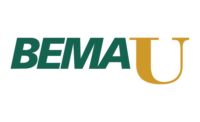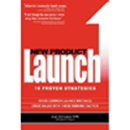
Hats off to a New Attitude
By Dan Malovany
For Roman Meal Co., the timing can’t be better. With the rollout of the 2005 Dietary Guidelines and the media’s and consumers’ focus on health, nutrition and whole grains, the company seems to be perfectly positioned to ride the wave.
“Basically, all Roman Meal has to do is tell its story,” says Gary Jensen, executive vice president of the Tacoma, Wash.-based company. “It doesn’t have to make up a whole-grain story. It doesn’t have to change the way it’s doing business. It’s been organized around whole grain from the beginning.”
Since the 1920s, when master baker William Matthaei purchased the company, Roman Meal Co. has focused on producing natural whole-grain products. In fact, last year the company updated the line’s packaging to brighten its presence on the shelf and enhance the fact that the products are made with “natural whole grains.” Moreover, its best-selling item is still the 24-oz. sandwich bread that lists whole wheat as the first item on its ingredient legend.
Today, the company supplies mixes to more than 90 licensed bakeries throughout the United States and abroad who produce Roman Meal bread and rolls in their local markets.
Conventional wisdom would state that Roman Meal just needs to stay the course, and it’s doing just that.
“In many ways, we’re just in the right place at the right time to do what we have always done and take our rightful place in the history of whole grain,” says Jensen, who joined Roman Meal last year.
Still, a mature brand like Roman Meal with a core consumer who tends to be female and 50- to 64-years old should be focusing on broadening its base by targeting a younger audience. At least, that’s according to conventional marketing wisdom.
However, the company is taking conventional wisdom and turning it on its head with a new marketing campaign and a line of new products that are anything but conventional.
“We’re honing in on that group, making sure that they are thinking about whole grains,” says Mary Jane Hominda, vice president of brand development.
Starting this fall, Roman Meal is rolling out three varieties of whole-grain breads officially licensed by the Red Hat Society, which is an organization of more than 1 million older women who get together for dinner, theater and other events, and wear red hats and purple dresses because, well, they can get away with it. Their motto is “We are not done yet.”
Currently, there are 23 million women in this age group, and their numbers keep on growing as more baby boomers reach the prime of their lives. The quirky society was started in the late 1990s by a group of women who felt just because they were over 50 didn’t mean they couldn’t get together and have fun.
“This target audience is overlooked,” Hominda notes. “Most ads out there are targeted toward 25-year-olds and this group is saying, ‘Hey, I have all of this disposable income. I’m in the prime of my life. I’m over 50, but no one is talking to me.’”
Over the last few years, the Red Hat Society has become a cultural phenomenon. Today, the society has 40,000 chapters who keep in touch via electronic newsletters, a monthly magazine, an annual convention and organized trips to places like Disney World.
Developed in conjunction with the Red Hat Society, Roman Meal’s new products are 100% whole grain but come in varieties that are as unique as its targeted audience. Named after the society’s fun-loving traveling Red Hatter called Ruby, the 24-oz. loaves come in Ruby’s Cranberry, Ruby’s Apple Cinnamon and Ruby’s Raisin Spice varieties.
“They’re kind of sassy products,” Hominda says. “They’re new flavors, and they’re whole-grain, which a lot of raisin breads are not.”
Over the years, the company has supported the Roman Meal brand by advertising in such national magazines such as Good Housekeeping or Ladies Home Journal, with its whole-grain and nutritional message.
To support the new product launch, Roman Meal has developed a line of hip ads with sayings such as: “Tell the truth and run,” which reflects the society’s whimsical, intelligent, carefree and almost anti-establishment attitude. The ads will run in the Red Hat Society’s monthly magazine and in other national magazines like Prevention, Ladies Home Journal and More.
“We told our advertising agency [Grey Worldwide Advertising], ‘We want something that is absolutely breakthrough as it’s related to whole grains,” Jensen says. “We didn’t want to show another Dagwood sandwich. We didn’t want to show another loaf of bread.”
The campaign’s theme is “the wisdom of whole grains.”
“The notion is, we’re trying to reach this consumer and describe how the product is relevant to her by complementing her on her wit and her ability and her attitude and not take on General Mills and Sara Lee and all the rest by saying, ‘Here’s another version of whole grains for you,’” Jensen says.
“We’re segmenting a category in a way that hasn’t been quite done before,” he adds. “Now, we’re focusing on an older consumer, and we’re going to reach her with a very hip and contemporary, fun line of products that the bakery category doesn’t have enough of. I think we can have some fun with it.”
Initially, the reaction from some of Roman Meal’s baker partners was a bit hesitant in the beginning, mainly because they didn’t know about the Red Hat Society.
“Invariably, what happens is that we tell them the story, and then they call us back and say, ‘We saw this group of women with red hats at a restaurant over the weekend and now we know what you’re talking about,’” Jensen says. “It’s so cool because this group is interested in aging gracefully. A healthy diet that includes whole grains — oh, by the way, from Roman Meal — is a perfect fit. We think it’s different. We think it’s unique. We think it will help contemporize the brand, and it gives the platform for new products that we think could have some value to the retailer and to our bakers.”
To develop the product, Roman Meal conducted extensive consumer focus groups with core consumers who told the company what type of products they wanted to see in the market.
“They told us, ‘Be sure it was nutritious and very, very tasty,” says Patrick Finney, vice president of innovation. “They did not want us to jam nutrition down their throats. Many of these women are tired of others telling them how healthful or how nutritious a product is. They just want to make sure the product is nutritious, high in fiber, soft enough and dense enough with a very clean label because this group of people between the ages of 50 and 64 read labels. They want clean labels and, of course, our products are loaded with whole grains.”
The company also put together an online panel of Red Hat Society experts who offer tips on how to better position the new products. Because this older group checks labels, for instance, Roman Meal made subtle adjustments to its packaging, such as putting the ingredient legend in larger type to make it easier to read.
Moreover, while many bakers are rolling out new whole-grain breads in a wide-pan format, the Red Hat Society breads will come in a standard-size, 9- or 10-in loaf.
“This group doesn’t want to have a huge sandwich,” Hominda says. “If they want to eat more, they can always have two [sandwiches]. They don’t need a huge slice of bread. They want a soft-but-dense product, but not in a wide or expanded pan.”
The new line of bread is the offspring of a thoroughly re-engineered new product process involving a series of gates and stages “designed to objectively assess the potential value to Roman Meal versus elevated company costs,” Finney says.
As the new product idea moves up the ranks, business cases are rewritten and refined by the project leaders.
“The higher the gate number, the more rigorously is the business case written,” Finney explains.
Three gatekeepers, typically top executives in the company, meet within hours after the revised business plans are electronically submitted.
“At each gate, the ideas are passed, failed or are held. No idea is ever lost. They’re all archived,” Finney says.
Jensen notes the better the new product process, the higher the probability of success.
“I used to measure success from a consumer standpoint, but now we measure it from a consumer standpoint and a bakers’ standpoint,” he explains. “We don’t want them to utilize resources that are very precious to distribute and sell products that have a low level of success.”
Currently, Roman Meal has 11 new product concepts under various stages of development, and it’s looking to add more.
“They’re not only in breads,” Finney notes. “We are considering numerous whole grain-based foods as potential Roman Meal products. If it’s whole-grain and a health-promoting type of product, Roman Meal has its fingers in it.”





